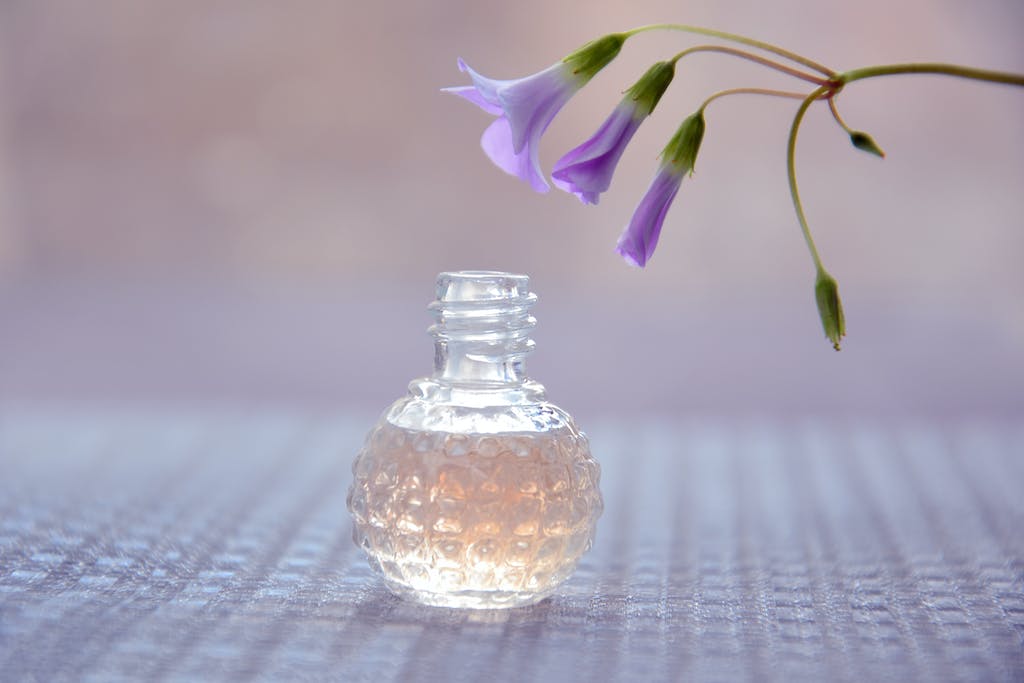

The choice of a vibrant raspberry perfume or any other fragrance and deciding whether to apply it to the skin or clothes goes beyond personal preference, delving into the realms of chemistry and personal style. This decision significantly influences how a fragrance, like the sweet and tangy notes of raspberry, manifests and endures.
The Basics of Perfume Application
Perfume is a sophisticated concoction of aromatic elements and solvents, designed to create a symphony of scents comprising top, middle, and base notes. The journey of a fragrance begins with the fleeting top notes, typically light and refreshing, setting the initial tone. As these evaporate, the heart or middle notes emerge, forming the core character of the perfume. These are generally well-rounded and linger longer. The journey concludes with the base notes, the foundation that gives depth and longevity to the fragrance.
Why Skin Application Matters
The tradition of applying perfume directly to the skin is rooted in the unique chemistry between the fragrance and the body. The skin’s natural oils and warmth not only amplify the perfume but also create a distinctive scent profile that evolves with time. This interaction allows the fragrance to become more personal and intimate, as each person’s skin chemistry subtly alters the scent. Additionally, body heat plays a vital role in diffusing the fragrance, making it more noticeable and dynamic throughout the day.
Skin-Friendly Perfume Application Tips
For optimal fragrance performance on the skin, strategic application is key. Targeting pulse points, such as the wrists, neck, inner elbows, and behind the ears, is advisable due to the higher body temperature in these areas, which helps in amplifying and releasing the scent. When applying perfume, it’s essential to dab or spray lightly, avoiding rubbing the area, as this can break down the perfume molecules, altering the intended fragrance profile. Additionally, consider the concentration of the perfume; eau de parfum requires fewer sprays than eau de toilette due to its higher concentration of aromatic compounds.
The Case for Clothes
Spraying perfume on clothes offers an alternative experience, with several distinct advantages. Fabrics can hold fragrances for a longer duration, often retaining the scent until the garment is washed. This can result in a more consistent and lingering fragrance experience throughout the day. Additionally, applying perfume to clothes minimizes the risk of skin irritation, especially for those with sensitive skin or allergies to certain fragrance ingredients. Clothes application also allows for a more uniform distribution of the scent, avoiding the concentration of fragrance in specific areas. However, one must be cautious with delicate or light-colored fabrics, as some perfumes may cause stains or damage.
Perfume and Fabric Types
Different fabrics interact with perfume in unique ways, affecting both the scent’s longevity and its development. Natural fibers like cotton and wool are ideal for holding fragrances; they absorb and retain scent molecules effectively, offering a slow and steady release. In contrast, synthetic fabrics may not hold the fragrance as well but can offer a more consistent scent profile as they don’t interact as much with the perfume’s chemistry. Delicate materials like silk require extra caution, as they can be susceptible to staining.
Longevity and Sillage
Longevity and sillage are critical factors in perfume application. Longevity refers to how long a fragrance lasts on your skin or clothes, while sillage describes the trail of scent left behind, its “throw” or reach. The application method significantly affects both. Skin application often results in a shorter longevity but more pronounced sillage due to the warmth of the body amplifying the fragrance. In contrast, clothes application typically provides longer-lasting fragrance with more subdued sillage, as the scent is less affected by body chemistry and heat.
Special Occasions vs. Everyday Wear
The choice between skin and clothes application can also be influenced by the occasion. For special events, a more pronounced and evolving scent from skin application may be preferred, adding a touch of elegance and personality. In contrast, everyday wear might benefit from the subtlety and consistency of clothes application, providing a steady background scent that is not overwhelming. The intensity and type of fragrance can also vary; lighter, fresher scents are often suitable for daily wear, while richer, more complex fragrances can be reserved for special occasions.
The Final Verdict
In conclusion, both skin and clothes applications have their unique advantages and challenges. Skin application offers a personal and dynamic fragrance experience, while clothes application provides consistency and longevity. The choice ultimately depends on personal preference, occasion, and the type of fragrance. Experimentation is key; don’t hesitate to try different methods and observe how they change your fragrance experience.
FTC Disclaimer: Keep in mind that I may receive commissions when you click links and make purchases. However, this does not impact my reviews.



